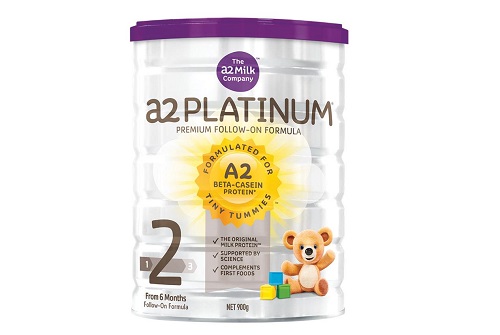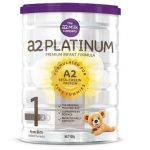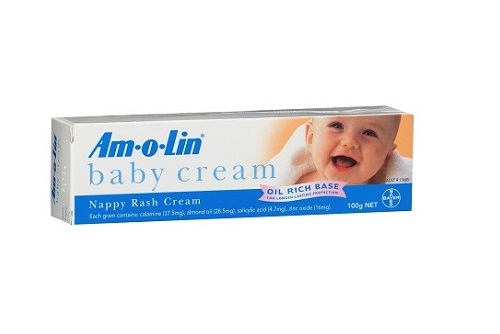A2 Platinum Premium Follow On Formula Stage 2 Review

Making sure that your baby has the right blend of nutrition is very important, no mother needs to be told this.
But getting the balance of nutrition right as well as making sure your baby gets enough of what she needs into her is a hard tightrope to walk on.
This is difficult with a newborn, and can be just as difficult from six months, when you are adding solids.
There are so many decisions to make right now.
What foods do you feed your baby, and when do you introduce them?
What if your baby won’t take any solids, or only accepts one or two things; you can’t just feed them that surely?
Should you be offering some kind of buffet selection of fresh seasonal ingredients across the day, or is it acceptable to make tasty brown mush for every meal?
Do you have to do the extensive research of a qualified nutritionist to know how to feed your child?
The main thing to remember at this time is you are introducing solids around now.
You won’t continue to solely breast or bottle feed; it is time for other food to be added to your little one’s diet.
But solids shouldn’t be your baby’s entire daily intake, their diet is supplemented nutrient-wise by breastmilk/formula.
There are a few reasons why formula feeding in the second six months of life can be difficult:
· Deciding to formula feed either through biological or lifestyle challenges can be hard, as there is a weight of guilt added to it.
Do you want your products to be reviewed by our expert mothers?
Get your pregnancy and baby products exposed to over 50,000 new Australian mothers per month!
· Every mother wants to give their baby the very best, and when you have to choose to compliment breastfeeding with solids and with or without formula you do a lot of second guessing and doubting of your decisions.
· This is a time when a lot of mothers move from breastfeeding to formula feeding.
· This could happen because they are going back to work or to managing life in general, or because their baby is having trouble with the breast, or decides to self-wean.
· It can be easier to introduce formula from birth than it can from six months or older.
· There is a big difference between the consistency of breastmilk and formula, and a lot of babies find this transition displeasing and refuse to take it.
· And if your baby has never taken a bottle teat before this another challenge on top of all that.
There is a current shortage of quality formula in Australia, with third parties buying it up to sell to overseas markets for triple the price.
Many empty shelves and lack of choice face exhausted parents when they make that horrible midnight groceries run.
It can seem near impossible to find a formula that you like the nutritional value of, and your baby likes the taste of, and that agrees with your baby’s tummy, only to find the supermarket has sold out.
It doesn’t take much to make a mother feel guilty sometimes, so if you are having trouble getting your six-month-old to feed well right now, try to give yourself a break.
Baby formula is designed with the very best science behind it, so you should have some confidence that you are giving your baby what she needs regardless of which one you go with.
Choose something that works for you in terms of price, convenience, and that your baby will eat.
At this time making your own baby food, and finding things your baby will not throw back at you or throw up all over you is kind of the most important thing right now.
Choose a formula that will bring you the least amount of stress as possible.
A2 Milk – What is the big deal anyway?
People are claiming that A2 milk is this new revolution in dairy digestion; and that it is so much better for certain stomachs than to have regular milk (which contains both the A1 and A2 protein).
So is A2 better for your baby?
There is some debate that A2 milk may affect your baby’s development of autism, heart disease,
Type 1 Diabetes or the incidence of SIDS, but insufficient evidence to make a call on any of this currently.
There is some evidence that people find A2 easier to digest, especially people who are lactose intolerant, so it may be better for some babies.
It does still contain lactose however, but may be easier on some troubled stomachs.
If you have a family history of lactose problems, or your little one has been having tummy troubles since birth, it may be a good idea to try the A2 option over formula containing both milk proteins.
Just try it and see what works.
A2 Follow On Formula Stage 2 – Quick Overview
Strong brand – this comes from a strong brand supported by solid science and much testing and research.
The A2 brand may seem new, but it is a good brand and generally easy to trust.
A2 Milk – there is evidence that A2 may be easier on some tummies, so could be a better choice for your baby if she has digestion problems.
Easing your baby’s digestion makes life a lot easier in terms of less crying, more sleeping, and less nappy tsunamis, so all mums might lean towards this a little.
Details, Preparation and Use
Check the ingredients to make sure that there is nothing your baby has allergies to, but other than that, you should know there is a healthy balance of nutrition contained for a baby’s needs.
The formula is a mixture of nutritionally complete ingredients and vital vitamins and minerals.
There are also a range of other ingredients that promote optimal growth and development.
1. Vitamins
A2 Follow On contains some highly important vitamins that are essential to helping nourish your growing child. For instance,
Vitamin C is a useful antioxidant that nourishes, maintains, and cleanses the bones and connective tissues.
Vitamin B12 enriches the blood cells and keeps them healthy.
Vitamin D enables the body to absorb calcium and keep the bones strong and dense as they develop.
2. Minerals
Some of the minerals in this formula are crucial to Bubs.
There are high quantities of calcium, zinc, magnesium, folic acid and iron, all of which are fundamental for blood, brain and bone growth.
There are differences between manufacturers in the composition of different formula; however the composition of all infant formula products has to comply with strict standards set by Food Standards Australia and New Zealand (FSANZ).
Most formulas are based on cow’s milk, where the ratio of whey to casein is changed so that the combination of these protein types is closer to that of breast milk.
Infant formulas also have a blend of vegetable oils added as a fat source and most include essential fatty acids, such as Omega 3 DHA, that help support normal brain and eye development.
The lactose from the cow’s milk base provides a source of carbohydrate.
There may be other potentially beneficial ingredients added to the formula, including nucleotides and prebiotics which may support the developing immune system or the development of healthy gut bacteria and so help support digestion.
Preparation Instructions, as listed on their website
Step 1
Before starting, wash hands with soap and water and dry using a clean cloth. Clean the feed preparation surface thoroughly.
Clean all equipment and utensils (e.g. feeding cup) in hot soapy water and then rinse thoroughly in clean water.
Next, sterilise all equipment and utensils using a commercial steriliser, or by completely submerging in a pan of water and bringing to a rolling boil for 5 minutes (allowing all air bubbles to escape).
Cover the pan until the feeding equipment is needed. If feeding and preparation equipment are removed prior to use, keep the fully assembled feeding cups covered in a clean place.
Step 2
Boil drinking water in a pan or kettle.
Read the feeding guide instructions on the product can to find out how much water and powder is needed.
Taking care to avoid scaling, pour the required amount of water into a sterilised feeding bottle.
The water should be no cooler than 70 °C, so do not leave it for more than 30 minutes after boiling.
Step 3
Using only the enclosed scoop, fill scoop and level off using the built-in leveller.
Avoid compacting powder.
Add the exact amount of formula specified in the feeding guide on this can to the water in the feeding cup.
Always add 1 level scoop of powder for each 50mL of water.
Mix thoroughly by shaking gently or swirling the bottle to dissolve the powder.
Step 4
Immediately cool to feeding temperature by holding the feeding cup under cold running water, or by placing in a container of cold or iced water (make sure none of this water gets into the feed).
Step 5
Check the temperature of the feed by dripping a little amount onto the inside of the caregiver’s wrist. It should feel lukewarm, not hot.
If it still feels hot, cool some more before feeding.
Feed your baby immediately (throw away any feed that has not been consumed within 2 hours).
Price of Product and Similar Products
This product is more specialist and as such is not the best value for money on the market. At around $35 for a tin (900g), it is between $5 and $10 more expensive than some of its competitors.
However, if your baby won’t tolerate cheaper products, and this one makes her happy, then it’s easily worth the price for your own sanity and peace of mind.
Behind the Brand and Manufacturer
A new brand name in dairy products, but with a solid scientific base behind it.
This company source milk from Australian farms that have handpicked cows with only the A2 protein.
The idea behind this is new, but the cows and farmers have been doing it for years.
Review Summary and Thoughts
This is a strong, trustworthy brand and an excellent product.
While it is more expensive than some competitors, it can be better for some fussy tummies.
If it works for your baby, it is worth the price.
Product Rating
Price
6/10
Ingredients
9/10
Nutrients
9/10
Quality
10/10
Preparation
9/10
Overall Rating
9/10
How much does it cost?
Buy discount price at: Amazon Australia


